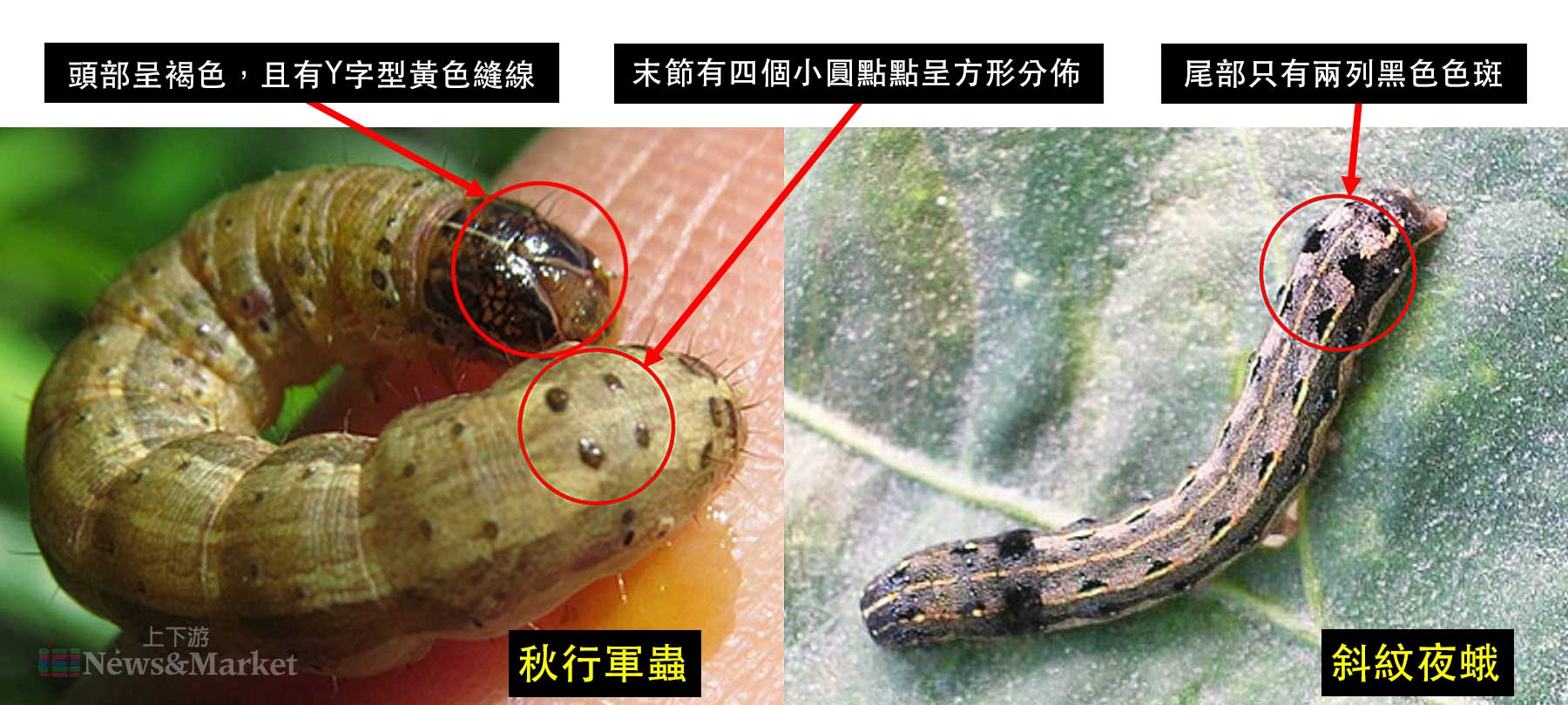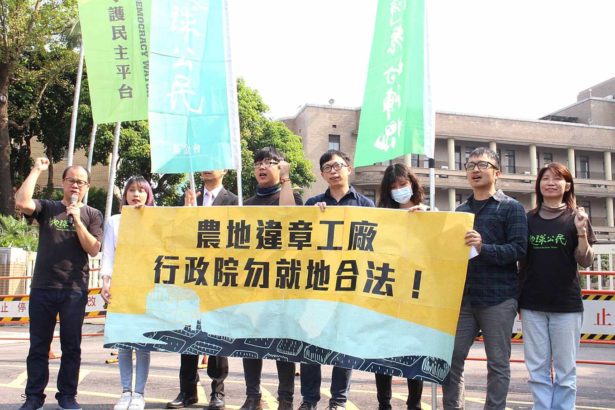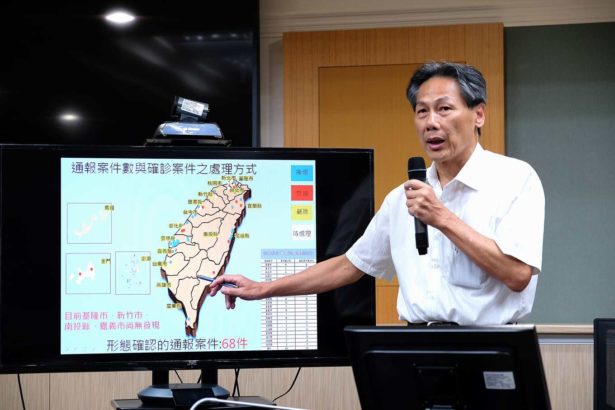Rumors of "autumn military insects 0619" are everywhere, and autumn military insects have been found in Taiwan many years ago. Experts and scholars refute the rumor
4768 share
The autumn army insect is an important pest wanted by the Food and Agriculture Organization of the United Nations (FAO). It mainly damages corn, rice, sorghum, cotton, cruciferae, cucurbitaceae, Solanaceae and other cash crops. At the beginning of this year, it invaded China and then rapidly spread to 18 provinces. Taiwan discovered the first case of autumn military insects on the 8th of this month. As of noon today (19), there were 98 confirmed cases of autumn military insect larvae in China. 64 cases have been destroyed, 9 cases have been sprayed, a total of 73 cases have been carried out, and now it has entered the second stage of "drug control".
In the face of the possible outbreak of harmful field pests in Taiwan, many farmers assert that this insect "has long been seen" and "was found in Taiwan ten years ago." they question the fact that epidemic prevention units and experts and scholars have only made a big move to 'catch the pest' this year. According to the Internet, "the autumn army insects have existed in Taiwan for a long time"? Experts and scholars look at it this way and say so.
Monitoring expert: a survey was launched last year, and all kinds of nocturnal moths were found, but there were no autumn bugs.
According to the United Nations Agriculture and Food Organization (FAO), the autumn army insect originated in the Americas, invaded Africa in 2016, spread to India, Sri Lanka and Yunnan, China in 2018, and spread rapidly in more than a dozen provinces in China at the beginning of this year (2019).
Before June 8 this year, no matter whether it was the scholars engaged in field monitoring or the team of biographic investigation, or the universities and agricultural improvement farms that accepted plant and insect samples sent by farmers and carried out diagnostic identification services, no signs of autumn marching insects were found, and no autumn marching adults were caught in the pheromone traps of the moth family all over the country.
Xie Jiahong, an assistant professor in the Department of Forestry and Conservation at Culture University, who is in charge of molecular identification of autumn military pests, says that from June last year to early March this year, the research team conducted biological control experiments in corn fields in Chiayi, Yunlin, and Hualien. Every month, they went to the fields to investigate the pest situation. "all kinds of night moths, such as Spodoptera exigua, Spodoptera exigua, and Spodoptera exigua were found, but no autumn armyworm was found."

.jpg)
The first autumn military pest case in China is maize strain (photo courtesy of Miaoli County Agriculture Department)
When the worm is found in the "second stage", the forced spraying will be started, and the drug will be used under the guidance of the experts in the improvement field.
As adults and a number of evidence have been found on this island, it is confirmed that the second generation of autumn military insects has bred in Taiwan. The "Autumn Army insect disaster Emergency response team" (referred to as the "response team") announced urgently on the 18th that it immediately entered the "second stage" of prevention and control: once the eggs, pupae, larvae and adults of the autumn army insects were found, they should be notified to facilitate the delineation of the control area. Signs will be set up in the control area to prevent the entry and exit of idle people, and a set of sex pheromone traps will be hung around each hectare for monitoring. The drugs will be uniformly purchased by the local government and will be paid for spraying operations.
The response team explained that the medication procedure is guided by experts in the improvement field and will take turns to use drugs with different action mechanisms. at present, there are 11 kinds of drugs available, such as Zenote, Novarone, Fluoridamine, Kreb, Effenning, Ifenning, Thioenemy, and Thioren. To ensure that crops are harvested and sold in accordance with the relevant norms of drug withdrawal during the safety period. During the control period until the end of the crop growing period, crop compensation will no longer be carried out because the crops in the field can still be harvested.
Farmers should not spray medicine by themselves. Organic farmers can choose thurium or use chemicals after reporting.
The response team stressed that farmers should not spray medicine by themselves. at present, they should actively patrol the fields, make immediate notification, and let experts guide the use of medicine, which is conducive to prevention and control.
As for the part of the organic farmland, after the insect body is found, the thuriac can be used for control. If the chemical substance is used, the farmer should notify the verification agency in advance, and the verification agency shall determine the scope of control and the period of control. The commodities produced during this period shall not be marked "organic", but ultimately will not affect their certification qualifications.
(to read more autumn army and insect news, please click here.)
- Prev

Earth Citizen / surprise Ministry of Economic Affairs officials made fraud, signed by 100,000 people, and legalized escorting illegal factories.
Earth Citizen / surprise Ministry of Economic Affairs officials made fraud, signed by 100,000 people, and legalized escorting illegal factories.
- Next

Autumn military insects 0617 "crisis is rising!" Taiwan discovers that "adults" multiply and take root, initiating compulsory spraying control.
Autumn military insects 0617 "crisis is rising!" Taiwan discovers that "adults" multiply and take root, initiating compulsory spraying control.
Related
- A course of planting techniques and methods on how to grow carrots
- How to plant the latest tulips?
- Is it better to pick tea in the morning or in the afternoon? When is the best time for tea to be picked? what is the third or fifth tea?
- Launch Yuanxiao Happy combination Haocha + Tea Yuan healthy Taste
- Penghu Tourism "Fireworks 20 Parade with You"
- 2022 West Lake Happiness holds "Digital Revitalization Voucher" and draws iphone13 and laptop.
- Banqiao Fuzhou social houses are designed to change start-up combined with police elimination to create a safe and livable environment
- The convenient measure of "mechanical weeding" in Xinbei has been abused and the Agriculture Bureau has imposed heavy penalties on the illegal land consolidation.
- Changgeng University Joins Hands with Four Memory Factories to Rescue Memory Talent Shortage
- The list of Taiwan's top 100 MVP managers is listed by the Director-General of the Farmers' Association of Sanxia District.

